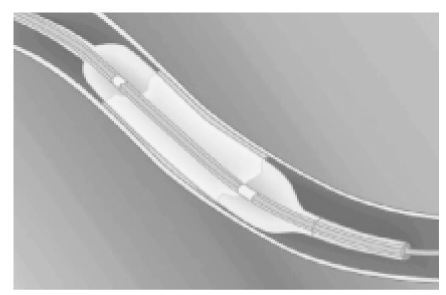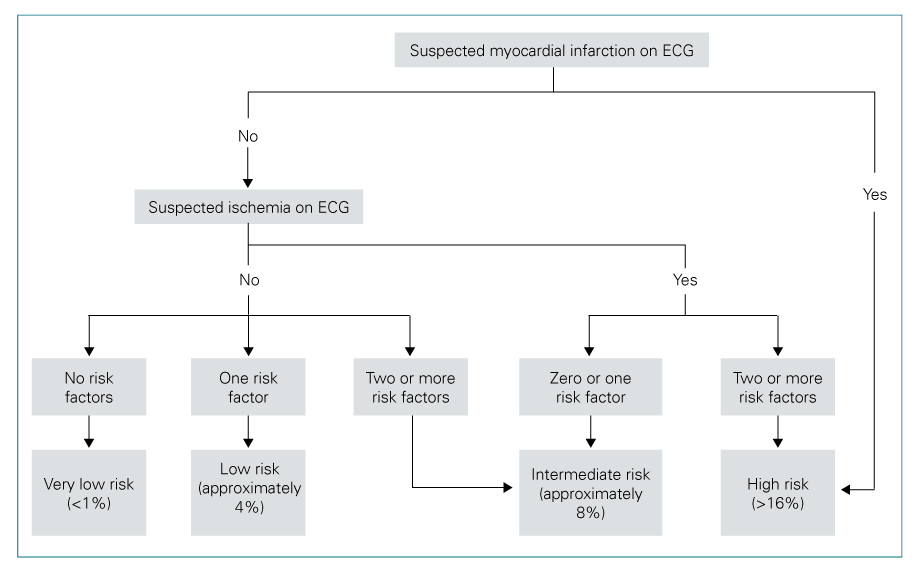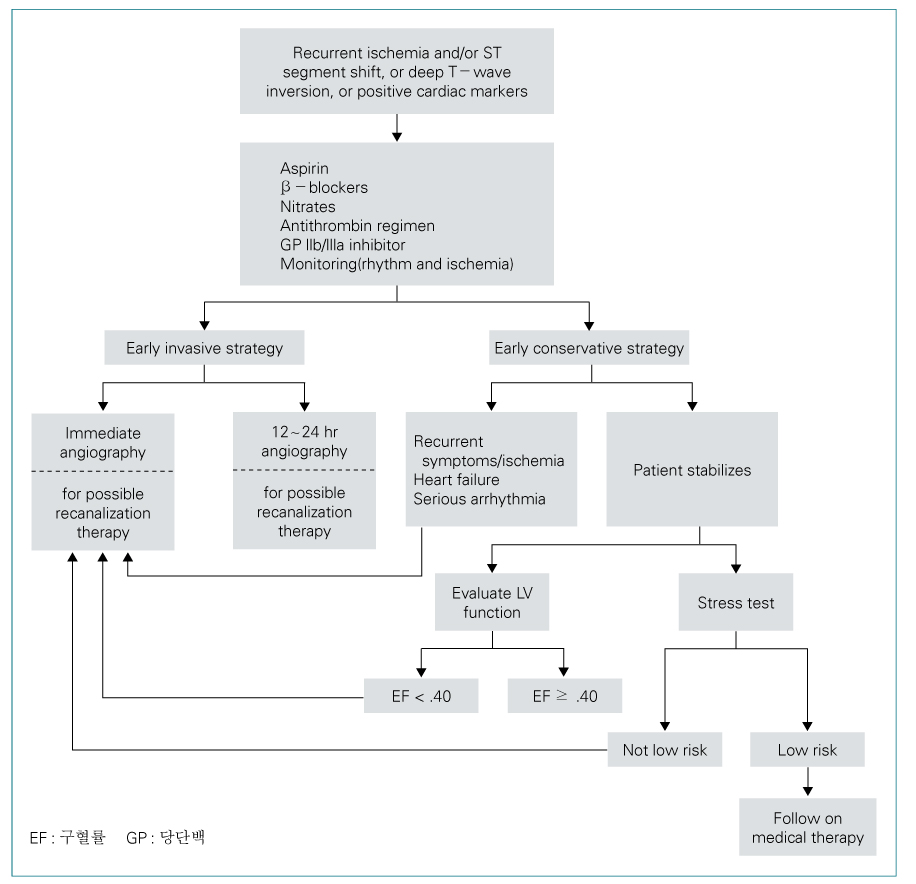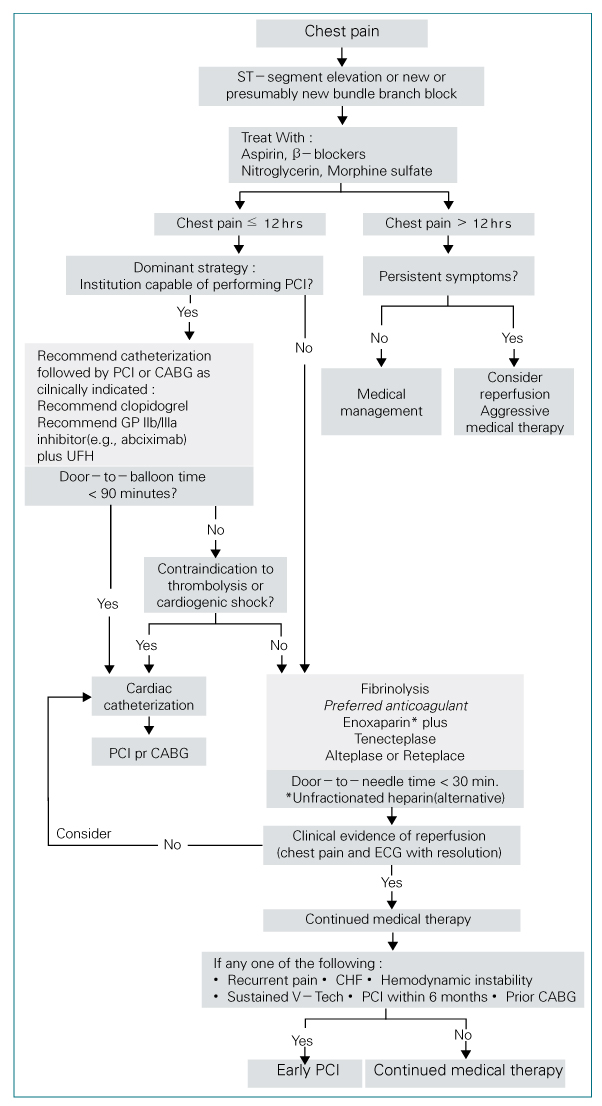J Korean Med Assoc.
2004 Aug;47(8):736-757. 10.5124/jkma.2004.47.8.736.
Percutaneous Coronary Intervention for Coronary Artery Disease
- Affiliations
-
- 1Department of Cardiovascular Medicine, Chonnam National University Medical School and Hospital, Korea. myungho@chollian.net
- KMID: 2183493
- DOI: http://doi.org/10.5124/jkma.2004.47.8.736
Abstract
- Recently the incidence of coronary artery disease has been increasing in Korea. Percutaneous coronary intervention (PCI) has been established as one of the most effective therapeutic methods in addition to medical therapies, especially for patients with acute coronary syndrome (ACS). ACS refers to unstable angina (UA), non-ST segment elevation myocardial infarction (NSTEMI), and ST segment elevation myocardial infarction (STEMI). UA/NSTEMI is a common but heterogeneous disorder with patients exhibiting a wide variety of risks. In patients with UA/NSTEMI, early risk stratification is at the center of the management program and can be achieved by using clinical criteria, electrocardiographic changes and biomarkers, or both. Platelet glycoprotein (GP) IIb/IIIa receptor blockers are indicated in high-risk patients who are likely to undergo PCI, but are not indicated in the management of lower risk patients who do not undergo PCI. There is a hard evidence to support the substitution of the lowmolecular weight heparin for unfractionated heparin. Many recent trials have demonstrated the benefit of an early invasive strategy with coronary angiography followed by PCI in patients at high and intermediate risk. Prompt reperfusion of ischemic myocardium is the major focus of acute treatment of patients with STEMI. Two reperfusion strategies have been developed: thrombolytic therapy and primary PCI. Although these two strategies have t raditionally been considered distinct and at times competing options, it is likely that the care of patients with STEMI will be improved in the future if they are viewed as a single integrated effort for reperfusion. However, PCI has been shown to be superior to thrombolysis in the treatment of STEMI admitted to highly experienced PCI centers. A meta-analysis of many randomized trials found significantly lower mortality rate, and lower rate of nonfatal reinfarction and intracerebral hemorrhage with primary PCI compared with thrombolysis. Currently, a primary PCI strategy may begin with the initiation of a platelet GP IIb/IIIa receptor blocker in the emergency center, together with aspirin and heparin (especially low molecular weight heparin), followed by rapid application of coronary angioplasty with stenting. Primary PCI is feasible in community hospitals without surgical capability, however, due to the conc erns about timing and safety margin, this approach is not yet advocated in the current guidelines.
MeSH Terms
-
Acute Coronary Syndrome
Angina, Unstable
Angioplasty
Aspirin
Biomarkers
Blood Platelets
Cerebral Hemorrhage
Coronary Angiography
Coronary Artery Disease*
Coronary Vessels*
Electrocardiography
Emergencies
Glycoproteins
Heparin
Hospitals, Community
Humans
Incidence
Korea
Molecular Weight
Mortality
Myocardial Infarction
Myocardium
Percutaneous Coronary Intervention*
Reperfusion
Stents
Thrombolytic Therapy
Aspirin
Glycoproteins
Heparin
Figure
Reference
-
1. Lee TH, Goldman L. Evaluation of the patient with acute chest pain. N Engl J Med. 2000. 342:1187–1195.
Article2. Braunwald E. Application of current guidelines to the management of unstable angina and non-ST-elevation myocardial infarction. Circulation. 2003. 108:III-28–III-37.
Article3. Braunwald E, Antman EM, Beasley JW, Califf RM, Cheitlin MD, Smith SC Jr, et al. ACC/AHA guidelines for the management of patients with unstable angina and non-ST-segment elevation myocardial infarction : A report of the American College of Cardiology/American Heart Association task force on practice guidelines(committee on the management of patients with unstable angina). J Am Coll Cardiol. 2000. 36:970–1062.4. Hamm CW. New serum markers for acute myocardial infarction. N Engl J Med. 1994. 331:607–608.
Article5. Wu AH, Apple FS, Gibler WB. National Academy of Clinical Biochemistry Standards of Laboratory Practice : Recommendations for the use of cardiac markers in coronary artery diseases. Clin Chem. 1999. 45:1104–1121.
Article6. Davidson NE, Helzlsouer KJ. Decision making with cardiac troponin tests. N Engl J Med. 2002. 346:2079–2082.
Article7. Antman EM, Tanasijevic MJ, Thompson B. Cardiac-specific troponin I levels to predict the risk of mortality in patients with acute coronary syndromes. N Engl J Med. 1996. 335:1342–1349.
Article8. Lee SH, Jeong MH, Park JS, Kim W, Kim KH, Kang JC, et al. The long-term clinical significance of troponin and electrocardiogram in patients with unstable angina. Korean J Med. 2001. 61:506–517.9. Anderson HV, Cannon CP, Stone PH, Williams DO, McCabe CH, Braunwald E, et al. One-year results of the Thrombolysis in Myocardial Infarction(TIMI) IIIB clinical trial. A randomized comparison of tissue-type plasminogen activator versus placebo and early invasive versus early conservative strategies in unstable angina and non-Q wave myocardial infarction. J Am Coll Cardiol. 1995. 26:1643–1650.10. Boden WE, O'Rourke RA, Crawford MH, Blaustein AS, Deedwania PC, Lavori PW, et al. Outcomes in patients with acute non-Q-wave myocardial infarction randomly assigned to an invasive as compared with a conservative management strategy. Veterans Affairs Non-Q-Wave Infarction Strategies in Hospital(VANQWISH) Trial Investigators. N Engl J Med. 1998. 338:1785–1792.
Article11. Lagerqvist B, Safstrom K, Stahle E, Wallentin L, Swahn E. FRISC II Study Group Investigators. Is early invasive treatment of unstable coronary artery disease equally effective for both women and men? FRISC II Study Group Investigators. J Am Coll Cardiol. 2001. 38:41–48.
Article12. Cannon CP, Weintraub WS, Demopoulos LA, Vicari R, Frey MJ, Braunwald E, et al. TACTICS Thrombolysis in Myocardial Infarction 18 Investigators. Comparison of early invasive and conservative strategies in patients with unstable coronary syndromes treated with the glycoprotein IIb/IIIa inhibitor tirofiban. N Engl J Med. 2001. 344:1879–1887.
Article13. Fox KA, Poole-Wilson PA, Hendersen RA, Clayton TC, Chamberlain DA, Pocock SJ, et al. Randomized Intervention Trial of Unstable Angina Investigators. Interventional versus conservative treatment for patients with unstable angina or non-ST elevation myocardial infarction ; the British Heart Foundation RITA 3 randomized trial. Randomized Intervention Trial of Unstable Angina. Lancet. 2002. 360:743–745.14. FRISC study group. Low-molecular-weight heparin during instability in coronary artery disease. Lancet. 1996. 347:561–568.15. Hong YJ, Jeong MH, Lee SH, Park OY, Kim JH, Kang JC, et al. The use of low molecular weight heparin in to predict clinical outcome in patients with unstable angina that had undergone percutaneous coronary intervention. Korean J Intern Med. 2003. 16:167–173.16. Leizorovicz A. The FRAXIS study. In : XXth Congress of the European Society of Cardiology; August 1998; Vienna, Austria. –25.17. Cohen M, Bigonzi F, Le louer V, Gosset F, Fromell GS, Goodman S. One year follow-up of the ESSENCE trial(enoxaparin versus heparin in unstable angina and non-Q-wave myocardial infarction). J Am Coll Cardiol. 1998. 31:79A.
Article18. Antman EM, McCabe CH, Gurfinkel EP, Turpie AG, Bernink PJ, Braunwald E, et al. Enoxaparin Prevents Death and Cardiac Ischemic Events in Unstable Angina/Non Q-Wave Myocardial Infarction : Results of the Thrombolysis In Myocardial Infarction(TIMI) 11B Trial. Circulation. 1999. 100:1593–1601.
Article19. Lim SY, Bae EH, Jeong MH, Lee SH, Kim HG, Kang JC, et al. The clinical effect of Tirofiban with low molecular weight heparin in patients with acute Non-ST segment elevation myocardial infarction. Korean J Med. 2003. 65:527–534.20. EPILOG Study. Platelet glycoprotein IIb/IIIa receptor blockade and low-dose heparin during percutaneous coronary revascularization. N Engl J Med. 1997. 336:1689–1696.21. The EPISTENT Investigators. Randomised placebo-controlled and balloon-angioplasty-controlled trial to assess safety of coronary stenting with use of platelet glycoprotein IIb/IIIa blockade. Lancet. 1998. 352:87–92.22. The PURSUIT Trial Investigators. Inhibition of platelet glycoprotein IIb/IIIa with eptifibatide in patients with acute coronary syndromes. Platelet Glycoprotein IIb/IIIa in Unstable Angina : Receptor Suppression Using Integrilin Therapy. N Engl J Med. 1998. 339:436–443.23. The EPIC Investigators. Use of a monoclonal antibody directed against the platelet glycoprotein IIb/IIIa receptor in high-risk coronary angioplasty. N Engl J Med. 1994. 330:956–961.24. The CAPTURE Investigators. Randomised placebo-controlled trial of Abciximab before and during coronary intervention in refractory unstable angina : the CAPTURE Study. Lancet. 1997. 349:1429–1435.25. Cannon CP, Weintraub WS, Demopoulos LA. Comparison of early invasive and conservative strategies in patients with unstable coronary syndromes treated with glycoprotein IIb/IIIa inhibitor tirofiban. N Engl J Med. 2001. 344:1879–1887.
Article26. The ESPRIT Investigators. Novel dosing regimen of eptifibatide in planned coronary stent implantation(ESPRIT) : a randomized, placebo-controlled trial. Lancet. 2000. 356:2037–2044.27. Platelet Receptor Inhibition in Ischemic Syndrome Management in Patients Limited by Unstable Signs and Symptoms (PRISM-PLUS) Study Investigators. Inhibition of the platelet glycoprotein IIb/IIIa receptor with tirofiban in unstable angina and non-Q-wave myocardial infarction. N Engl J Med. 1998. 338:1488–1497.28. King SB, Willerson JT, Ross AM. RESTORE Investigators. Time course of reduction in adverse cardiac events following angioplasty using a IIb/IIIa receptor blocker, Tirofiban : the RESTORE Trial. Circulation. 1996. 94:I - 199.29. Sousa JE, Costa MA, Abizaid A, Abizaid AS, Feres F, Serruys PW, et al. Lack of neointimal proliferation after implantation of sirolimus-coated stents in human coronary arteries. Circulation. 2001. 103:192–195.
Article30. Sousa JE, Costa MA, Abizaid AC, Rensing BJ, Abizaid AS, Serruys PW, et al. Sustained suppression of neointimal proliferation by sirolimus-eluting stents : one-year angiographic and intravascular ultrasound follow-up. Circulation. 2001. 104:2007–2011.
Article31. Morice MC, Serruys PW, Sousa JE, Fajadet J, Ban Hayashi E, Falotico R, et al. RAVEL Study Group. Randomized Study with the Sirolimus-Coated Bx Velocity Balloon-Expandable Stent in the Treatment of Patients with de Novo Native Coronary Artery Lesions. A randomized comparison of a sirolimus-eluting stent with a standard stent for coronary revascularization. N Engl J Med. 2002. 346:1773–1780.
Article32. Sousa JE, Costa MA, Sousa AG, Abizaid AC, Seixas AC, Serruys PW, et al. Two-year angiographic and intravascular ultrasound follow-up after implantation of sirolimus-eluting stents in human coronary arteries. Circulation. 2003. 107:381–383.
Article33. Moses JW, Leon MB, Popma JJ, et al. SIRIUS investigators. TCT. 2002.34. Degertekin M, Regar E, Tanabe K, Smits PC, van der Giessen WJ, Serruys PW, et al. Sirolimus-eluting stent for treatment of complex instent restenosis : The first clinical experience. J Am Coll Cardiol. 2003. 41:184–189.35. Holmes DR Jr, Leon MB, Moses JW, Popma JJ, Cutlip D, Kuntz RE, et al. Analysis of 1-year clinical outcomes in the SIRIUS trial : a randomized trial of a sirolimus-eluting stent versus a standard stent in patients at high risk for coronary restenosis. Circulation. 2004. 109:634–640.
Article36. Lemos PA, Serruys PW, van Domburg RT, Saia F, Arampatzis CA, de Feyter PJ, et al. Unrestricted utilization of sirolimus-eluting stents compared with conventional bare stent implantation in the "real world" : the Rapamycin-Eluting Stent Evaluated At Rotterdam Cardiology Hospital(RESEARCH) registry. Circulation. 2004. 109:140–142.37. Hong MK, Mintz GS, Lee CW, Song JM, Han KH, Park SJ, et al. ASian Paclitaxel-Eluting Stent Clinical Trial. Paclitaxel coating reduces in-stent intimal hyperplasia in human coronary arteries : a serial volumetric intravascular ultrasound analysis from the ASian Paclitaxel-Eluting Stent Clinical Trial(ASPECT). Asian Paclitaxel-Eluting Stent Clinical Trial. Circulation. 2003. 107:517–520.
Article38. Grube E, Silber S, Hauptmann KE, Mueller R, Buellesfeld L, Russell ME, et al. TAXUS I : six-and twelve-month results from a randomized, double-blind trial on a slow-release paclitaxel-eluting stent for de novo coronary lesions. Circulation. 2003. 107:38–42.39. Stone GW, Ellis SG, Cox DA, Hermiller J, O'Shaughnessy C, Russell ME, et al. One-Year Clinical Results With the Slow-Release, Polymer-Based, Paclitaxel-Eluting TAXUS Stent : The TAXUS-IV Trial. Circulation. 2004. 109:1942–1947.
Article40. Abizaid A, Albertal M, Costa MA, Abizaid AS, Staico R, Sousa JE, et al. First human experience with the 17-beta-estradiol-eluting stent : the Estrogen And Stents To Eliminate Restenosis(EASTER) trial. J Am Coll Cardiol. 2004. 43:1118–1121.41. Kim W, Jeong MH, Hong YJ, et al. The effects of local estradiol delivery in a porcine setnt restenosis model. Korean Circulation J. 2002. 32:II - 121.42. Lincoff AM, Kereiakes DJ, Mascelli MA. Abciximab suppresses the rise in levels of circulating inflammatory markers after percutaneous coronary revascularization. Circulation. 2000. 104:163–167.
Article43. Schwarz M, Nordt T, Bode C, Peter K. The GP IIb/IIIa inhibitor abciximab(c7E3) inhibits the binding of various ligands to the leukocyte integrin Mac-1(CD11b/CD18, alpha(M)beta(2)). Thromb Res. 2002. 107:121–128.
Article44. Kim W, Jeong MH, Hong YJ, Lee SH, Park WS, Kang JC, et al. The long-term clinical results of a platelet glycoprotein IIb/IIIa receptor blocker(Abciximab : ReoPro®) coated stent in patients with coronary artery disease. Korean J Med. 2003. 65:652–664.45. Hong YJ, Jeong MH, Kim W, Lim SY, Lee SH, Kang JC, et al. Effect of Abciximab-coated stent on in-stent intimal hyperplasia in human coronary arteries. Am J Cardiol. 2004. 1:(in press).
Article46. Keeley EC, Boura JA, Grines CL. Primary angioplasty versus intravenous thrombolytic therapy for acute myocardial infarction : a quantitative review of 23 randomised trials. Lancet. 2003. 361:13–20.
Article47. The PCAT Collaborators. Primary coronary angioplasty compared with intravenous thrombolytic therapy for acute myocardial infarction : six-month follow-up and analysis of individual patient data from randomised trial. Am Heart J. 2003. 145:47–57.48. Smith D. Primary angioplasty should be first line treatment for acute myocardial infarction : FOR. BMJ. 2004. 328:1254–1256.
Article49. Grzybowski M, Clements EA, Parsons L, Welch R, Tintinalli AT, Zalenski RJ, et al. Mortality benefit of immediate revascularization of acute ST-segment elevation myocardial infarction in patients with contraindications to thrombolytic therapy. JAMA. 2003. 290:1891–1898.
Article50. Stone GW, Grines CL, Cox DA, Garcia E, Tcheng JE, Lansky AJ, et al. for the Controlled Abciximab and Device Investigation to Lower Late Angioplasty Complications(CADILLAC) Investigators. Comparison of angioplasty with stenting, with or without abciximab, in acute myocardial infarction. N Engl J Med. 2002. 346:957–966.
Article51. Wharton TP Jr, Grines LL, Turco MA, Johnston JD, Souther J, Grines CL, et al. Primary angioplasty in acute myocardial infarction at hospitals with no surgery on-site(the PAMI-No SOS study) versus transfer to surgical centers for primary angioplasty. J Am Coll Cardiol. 2004. 43:1943–1950.
Article52. Andersen HR, Nielsen TT, Rasmussen K, Thuesen L, Kelbaek H, Mortensen LS, et al. for the DANAMI-2 Investigators. A comparison of coronary angioplasty with fibrinolytic therapy in acute myocardial infarction. N Engl J Med. 2003. 349:733–742.
Article53. Widimsky P, Budesinsky T, Vorac D, Groch L, Zelizko M, Formanek P, et al. PRAGUE Study Group Investigators. Long distance transport for primary angioplasty vs immediate thrombolysis in acute myocardial infarction : final results of the randomised national multicentre trial-PRAGUE-2. Eur Heart J. 2003. 24:94–104.54. Fernandez-Aviles F. on behalf of the GRACIA Group. Primary optimal percutaneous coronary intervention versus facilitated intervention(tenecteplase plus stenting) in patients with ST-elevated acute myocardial infarction (GARCIA-2). In : Presented at the European Society of Cardiology Congress 2003; September 2003; Vienna, Austria.55. Kastrati A, Mehilli J, Schlotterbeck K, Dotzer F, Dirschinger J, Schomig A, et al. Bavarian Reperfusion Alternatives Evaluation( BRAVE) Study Investigators. Early administration of reteplase plus abciximab vs abciximab alone in patients with acute myocardial infarction referred for percutaneous coronary intervention : a randomized controlled trial. JAMA. 2004. 291:947–954.
Article56. Ellis SG, Armstrong P, Betriu A, Brodie B, Herrmann H, Topol E, et al. Facilitated Intervention with Enhanced Reperfusion Speed to Stop Events Investigators. Facilitated percutanous coronary intervention versus primary percutaneous coronary intervention : design and rationale of the Facilitated Intervention with Enhanced Reperfusion Speed to Stop Events (FINESSE) trial. Am Heart J. 2004. 147:E16.57. The GUSTO Angiographic Investigators. The effects of tissue plasminogen activator, streptokinase, or both on coronary artery patency, ventricular function, and survival after acute myocardial infarction. N Engl J Med. 1993. 329:1615–1622.58. Chesebro JH, Knatterud G, Roberts R, Borer J, Cohen LS, Ludbrook P, et al. Thrombolysis In Myocardial Infarction (TIMI) Trial, Phase I : A comparison between intravenous tissue plasminogen activator and intravenous streptokinase : clinical findings through hospital discharge. Circulation. 1987. 76:142–154.
Article59. McKendall GR, Attubato MJ, Drew TM, Feit F, Sharaf BL, Williams DO, et al. Safety and efficacy of a new regimen of intravenous recombinant tissue-type plasminogen activator potentially suitable for either pre-hospital or in-hospital administration. J Am Coll Cardiol. 1991. 18:1774–1778.
Article60. Hong YJ, Jeong MH, Lee SH, Park OY, Kim JH, Kang JC, et al. The long-term clinical outcomes after rescue percutaneous coronary intervention in patients with acute myocardial infarction. J Interv Cardiol. 2003. 16:209–216.
Article61. Tadros GM, Islam MA, Mirza A, Blankenship JC, Iliadis EA. Angiographic and long-term outcomes of "rescue" stenting versus PTCA in failed thrombolysis in acute myocardial infarction. Angiology. 2004. 55:169–169.
Article62. Saia F, Lemos PA, Lee CH, Arampatzis CA, Hoye A, Serruys PW, et al. Sirolimus-eluting stent implantation in ST-elevation acute myocardial infarction. Circulation. 2003. 108:1927–1929.
Article63. Lemos PA, Saia F, Hofma SH, Daemen J, Ong AT, Serruys PW, et al. Short-and long-term clinical benefit of sirolimus-eluting stents compared to conventional bare stents for patients with acute myocardial infarction. J Am Coll Cardiol. 2004. 43:704–708.
Article64. Kim W, Jeong MH, Kang DG, Lee YS, Kim KH, Kang JC, et al. The long-term clinical results of a platelet glycoprotein IIb/IIIa receptor blocker(abciximab : ReoPro®)-coated stent in patients with acute myocardial infarction. Kor Circulation J. 2004. (submitted).65. Kim W, Jeong MH, Kim KH, Park JC, Lee SH, Kang JC, et al. The rescue use of a platelet glycoprotein IIb/IIIa receptor blocker(abciximab ; ReoPro®) in high-risk patients with acute myocardial infarction underwent percutaneous coronary inter-vention. Korean Circ J. 2001. 30:492–499.66. Antoniucci D, Rodriguez A, Hempel A, Valenti R, Migliorini A, Colombo A, et al. A randomised trial comparing primary infarct artery stenting with or without abciximab in acute myocardial infarction. J Am Coll Cardiol. 2003. 42:1879–1885.
Article67. Antoniucci D, Migliorini A, Parodi G, Valenti R, Rodriguez A, Santoro GM, et al. Abciximab-supported infarct artery stent implantation for acute myocardial infarction and long-term survival : a prospective, multicenter, randomized trial comparing infarct artery stenting plus abciximab with stenting alone. Circulation. 2004. 109:1704–1706.
Article68. Kandzari DE, Tcheng JE, Cohen DJ, Bakhai A, Grines CL, Stone GW, et al. CADILLAC Investigators. Benefits and risks of abciximab use in primary angioplasty for acute myocardial infarction : the Controlled Abciximab and Device Investigation to Lower Late Angioplasty Complications(CADILLAC) trial. Circulation. 2003. 108:1316–1312.69. Waters RE, Singh KP, Roe MT, Lotfi M, Sketch MH, Mahaffey KW, et al. Rationale and strategies for implementing community-based transfer protocols for primary percutaneous coronary intervention for acute ST-segment elevation myocardial infarction. J Am Coll Cardiol. 2004. 43:2153–2159.
Article70. Fox KAA. Management of acute coronary syndromes : an update. Heart. 2004. 90:698–706.
- Full Text Links
- Actions
-
Cited
- CITED
-
- Close
- Share
- Similar articles
-
- Recent Advances in Percutaneous Coronary Intervention in Coronary Artery Disease
- Diffuse Long Coronary Artery Disease is Still an Obstacle for Percutaneous Coronary Intervention in the Second-Generation Drug-Eluting Stent Era?
- Diabetes Mellitus and Coronary Angiography
- Forearm Compartment Syndrome after Transradial Percutaneous Coronary Artery Intervention
- Treat or Not to Treat Non-culprit Coronary Artery with Significant Stenosis during Primary Percutaneous Coronary Intervention








